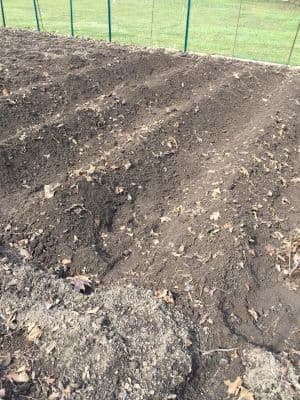Hilling Garden Plants

Hilling Plants in Early Spring
When it comes to proven gardening techniques, this one is as old as the hills. Native American Indians knew the benefits of hilling plants (or mounding plants). When early American settlers arrived in the New World, they found Native American Indians cultivating their fields, using this hilling technique. Most seeds sprout best in warmer soils. And, many plant roots can drown in wet soils. While hilling garden plants is commonly practiced in cool weather areas and in wet climates, it can be advantageous almost anywhere.
Major Advantages of Hilling Plants
Hilling plants is a great garden technique. This technique is used in early spring to improve cold, wet soils. It promotes faster and more successful seed germination.
Here are the major benefits of hilling plants:
First, the elevated soil warms quicker than the surrounding garden soil. Hilling allows more soil exposure to the warming rays of the sun and the air. This allows you to begin your planting season earlier. It can also translate into extra days of gardening in the fall.
Secondly, excess moisture can drain off and away from seeds and plants. Cold, heavy spring rains that rot seeds and drown roots of your seedlings, can be minimized or avoided by hilling a raised bed.
Hilled soil, or raised bed soil, is less compacted, making air pockets and nutrients more accessible to your plants. The looser soil allows your plants to more readily spread through the hill, and grow a larger, healthier root system.
In drier areas, hilling may not be desired, as much-needed water can drain away. But you can always add water. It’s more difficult to take it away.
Gardening Tip: When hilling plants, bury a healthy amount of compost under the soil of the hill. Your plants will thank you!
How to Hill Plants
Hilling is easy! It is done either in mounds for an individual plant or in rows.
To hill or mound individual plants, take a few shovels of rich garden soil and form a mound. Three to six inches high is enough. Bury a large amount of compost and well-rotted manure underneath the mound first. Once the soil has warmed a bit, plant your seeds or seedlings. This works great for pumpkins, squash, cucumber, potatoes, and watermelon.
To hill rows, shovel three to six inches of soil in a row the length you need. Use a rake to smooth the row. Then use a hoe to dig your furrows and plant seeds. This works great with snow peas, which can be grown as soon as the ground can be worked. It allows an earlier start for a wide range of plants, including corn and beans You can hill potatoes in rows, too.
Additional Resources
More on Composting at Garden Hobbies
Compost Tea a great liquid fertilizer
Please support our site. Shop for:
- rmmatthews100@hotmail.com
- 585-721-6528
- Rochester, NY
©1999-2024 GardenersNet.Com, All Rights Reserved

